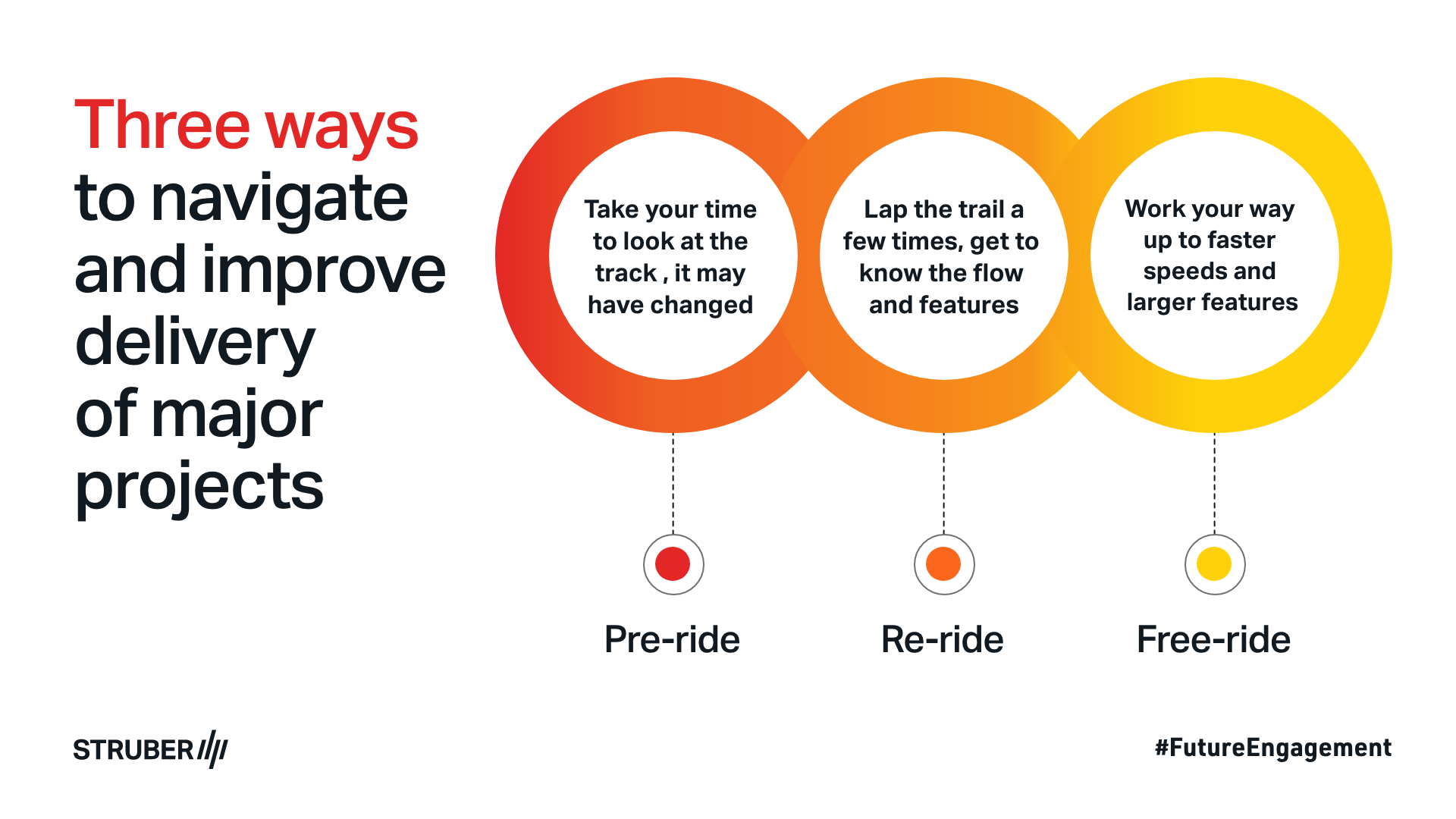.jpeg?width=300&name=6021fe98c67fb1c045b525ea_STRDL__1%20(1).jpeg)
Three steps to navigating stakeholder success on a major project
31 January, 2020
I recently did a mountain biking holiday in New Zealand for the first time – chair-lifted runs to the top and then riding downhill through every obstacle a steep mountain and forest can throw at you. And just like the first infrastructure project I ever worked on (the Tugun Bypass), I am hooked and looking for the next big mountain to ride down.
As I rode the chair lift up over a peaceful forest, there were signs with guidelines for preparing for your ride everyday – pre-ride, re-ride, freeride – which has so many synergies to how you plan to deliver major critical start up projects.
Major projects and particularly community engagement and stakeholder management can feel just like a downhill track – smooth then suddenly rough, obscured corners, hidden obstacles, jumps, steep sections you’re not sure how to tackle and the knowledge that one mistake can send you head over your handlebars.
But just like mountain biking, you don’t need to just hold on tight and hope for the best. There are many ways to navigate a downhill track, and the pre-ride, re-ride and freeride approach will keep you on track with your community and stakeholders.

Pre-ride – take your time to look at the track first, it may have changed since yesterday.
Detailed stakeholder mapping is critical in all planning, and the rise of social media makes this even more important. Our most influential stakeholders are not necessarily those in physical proximity to our project.
The more you understand about your stakeholders – and continue to build on this knowledge day after day, week after week – the better prepared you are to manage your relationships as the project progresses and the impacts become more significant.
The most important aspect of the pre-ride analogy is your stakeholder’s attitude may have changed since your last engagement. There are some fantastic tools that visually help you map your stakeholders and monitor this progress. Don’t assume this is an external tool – a highly visual, internal stakeholder mapping tool is essential on any project, particularly major projects with multiple work and stakeholder fronts.
Re-ride – lap the trail a few times and get to know the flow and features.
It takes time to understand the stakeholders in our project environment, and like any good relationship, there will be ups and downs. But as you get to know your stakeholders and particularly their touch points(whether positive or negative), you’ll know how to best engage with them.
Again, there are so many tools that can help you on your way. The number of touchpoints with our stakeholders continues to grow – in-person, email, phone, SMS, social media comments and shares, events and presentations to name a few. A central platform to capture and track all forms of engagement builds this critical understanding of your stakeholders, that should keep the project on track.
Free-ride – work your way up to faster speeds and larger features.
This is the most enjoyable phase – you have a developed and nurtured relationship with stakeholders, but it is also the riskiest. Just like riding a downhill track, our confidence and sometimes complacency grows – and a relationship can be quickly thrown off track.
A major project should never stay in this phase for long – the stakeholder engagement team must be regularly pre-riding and re-riding to identify potential risks or changes within the project environment that can send a project head over the handlebars. But do enjoy those ultimate freeride days while you can!
It is a unique type of person who enjoys the thrills and spills of riding downhill tracks, and stakeholder engagement professionals are no different. I believe the characteristics of the most successful engagement professionals are optimistic, empathetic, prepared, responsive and resilient.
Struber’s engagement team epitomises these characteristics and have been involved in planning and delivering major projects including Gold Coast Light Rail, Cross River Rail, Toowoomba Second Range Crossing, Canberra Light Rail and Parramatta Light Rail.
There is no team better equipped to help you plan to deliver major projects – and until I get your call, email, SMS or see you in person, I’m eying up some downhill tracks in Japan and Canada... actually just make that Australia.